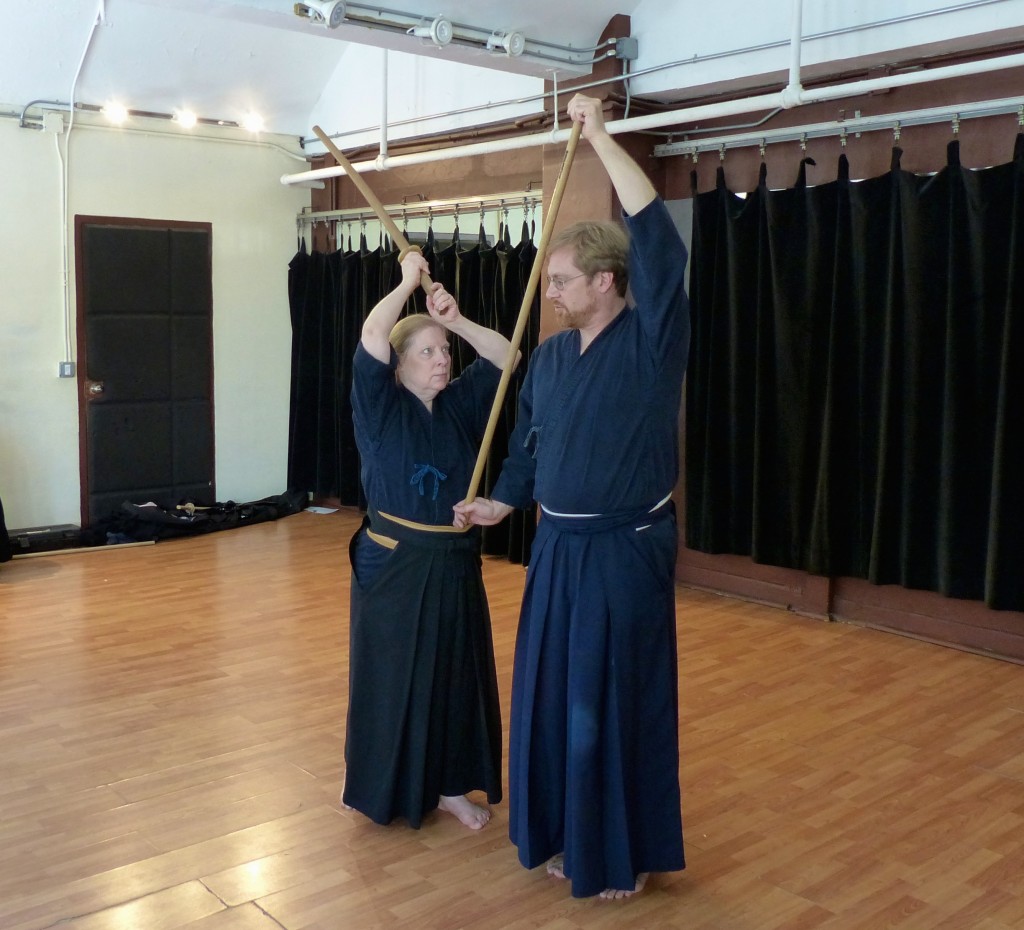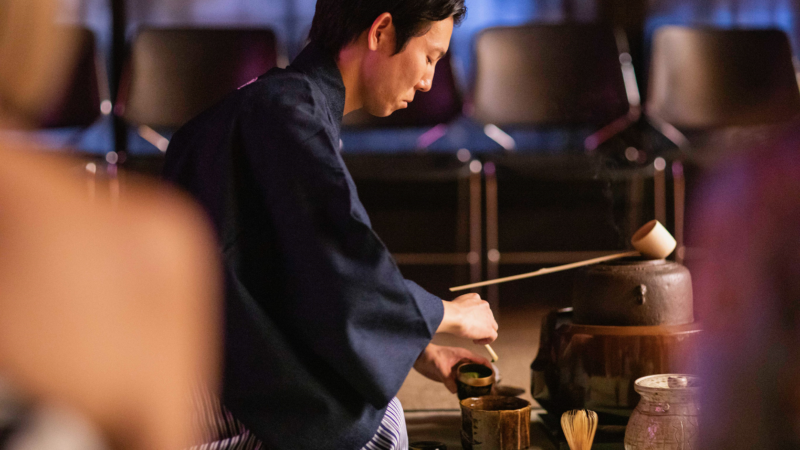Deborah Klens-Bigman, Ph.D. ◆ May 24, 2016

We practice jodo (stick fighting) as a workshop. I have permission from my instructors in Japan to teach what I know, but I still consider myself a beginner, as are the other people in the class. Like a lot of traditional martial arts forms, jodo is a practice I can work on for many years to come. Though I know I improve every week (and my students do too), jodo practice is a long, long continuum.
Jodo kata are all partner kata. The jo (stick) side is considered the less-advanced side, and the tachi (wooden sword) side is generally reserved for the more advanced students and the instructor. However, since the class is a workshop, everyone learns “both sides” of the kata. As members of the class have advanced, I have been able to accommodate total beginners by having them only be concerned about the jo side; but this is a relatively recent development. In the beginning we were all learning together, and, since I needed practice as much as anyone, I had to teach the tachi side so I would have someone to work with as well. This is not an orthodox approach, and whenever we go to a more formal get-together, I have to remind my students that they should concentrate on the jo side, since there are generally more advanced people to practice with.
The tachi side is the more advanced side because it is the “teaching” side. The jo side of the kata provokes, reacts and defends against the tachi. A similar situation arises in our kumidachi (paired wooden sword) practice, wherein the more advanced side is the uchidachi side (which is generally the side that attacks). The shidachi is the defender and generally wins. The uchidachi, like the jodo tachi role, introduces techniques so the shidachi or jo side can practice a set of techniques in return. While spacing and timing are generally accommodated by the jo side, the tachi side has a responsibility for making sure the jo techniques are practiced properly, and above all, safely. The tachi side also gets to bear any miscalculations on the part of the jo side. Again, the assumption is that the tachi side has the experience to anticipate any errors from the jo side to the extent it is possible. For example, starting a technique or kata too close together can “bind up” the practitioners; whereas being to far apart can result in ineffective technique. Ideally the tachi side can see when both partners are too close or too distant; something that only comes with experience. Since the jo side is responsible for setting the initial distance, the tachi can advise her partner when to close up space, or step back.
In addition, the tachi must be careful to make her technique as clear and straighforward as possible. From time to time I have noticed in techique practice that those on the tachi side are sometimes moving the bokuto slightly in anticipation of a strike by the jo (in hikiotoshi uchi, a striking exericise, for example). This movement in anticipation does not actually help the jo side in any way; there is no advantage in making things easier. Being neutral in the placement of the bokuto is the best way for the jo side to learn.
One of the most difficult but important things to learn in any partnered kata practice is to react to your partner rather than anticipate him. When I take the tachi side, I vary the speed with which I react to the jo side. (In fact, as the evening wears on, I get slower, because I am tired!) Even the most experienced students will sometimes get ahead of the tachi when they take the jo side. As the tachi, it is my job to stop the kata and point out why the jo would not want to get ahead of the tachi’s movements. The jo side then begins to comprehend that jodo is the study of ma (間), the timing with which one moves through space. It often happens that students on the jo side want to rush through everything. The tachi can slow down the kata and give everyone the timing and spacing needed in order to perform the techniques correctly.
The tachi (or any teaching side) of a kata has to exhibit good technique, good awareness and self-control. He has to take the occasional off-target tap or poke without losing his temper, remembering that no one is deliberately trying to hurt anyone. As tachi, we get the opportunity to set a good example for each other, and establish an environment where everyone can learn.




